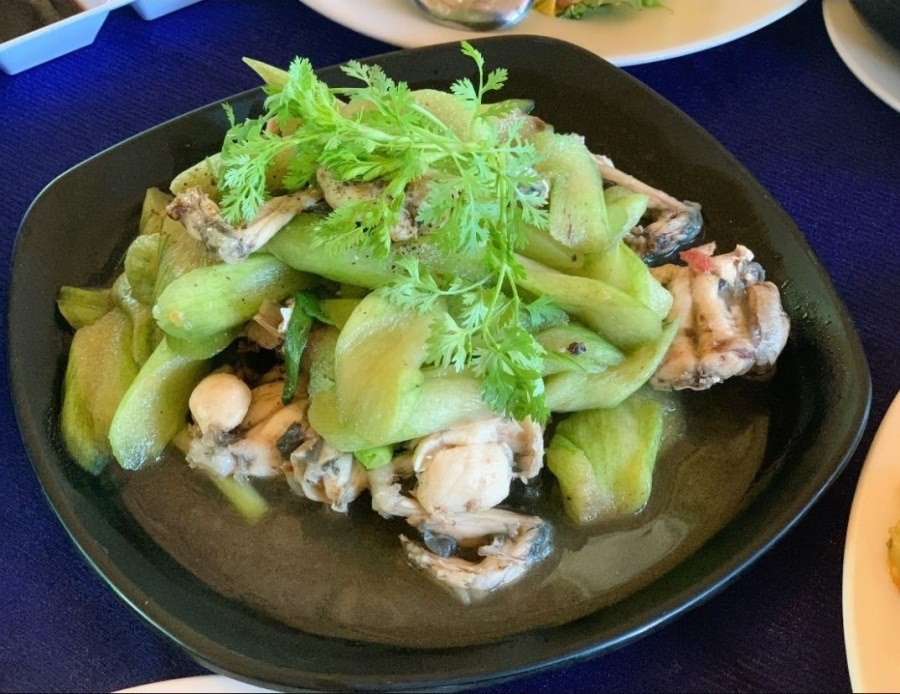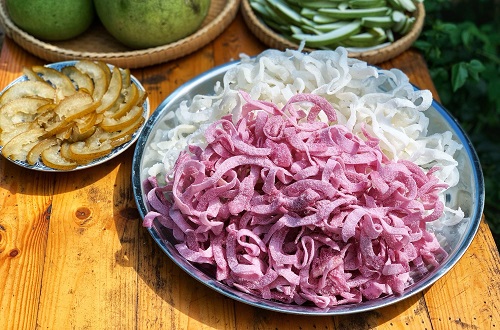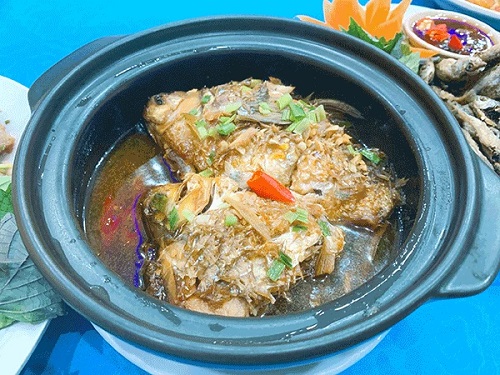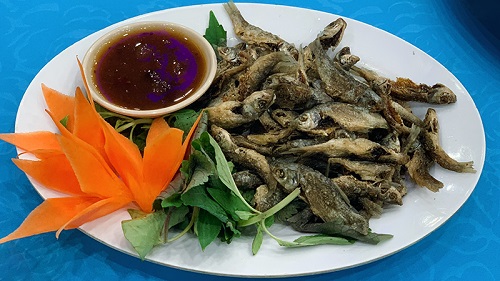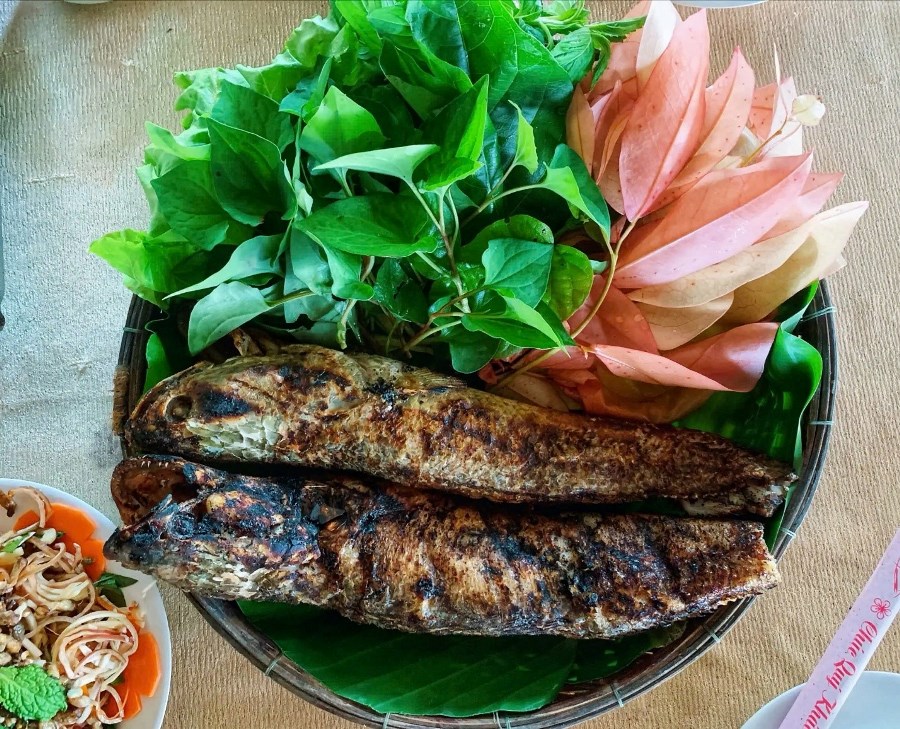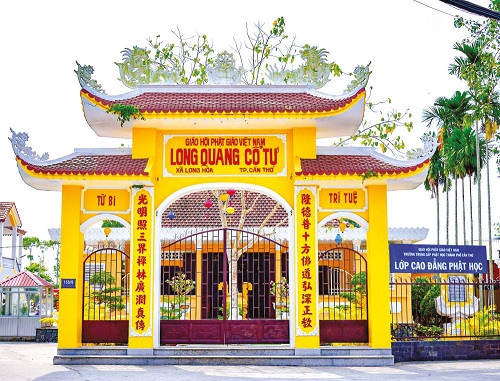
A brief history of the establishment
Long Quang Temple was founded in the fifth year of Minh Mang (1824), in Binh Thuy village. The village was originally established in the mid-18th century, in the sixth year of Gia Long (1807). There was a 10-year-old boy named Vo Van Quyen who devoted himself to seeking the religion, wandering to Linh Quang Temple in Gia Dinh to take refuge with Buddhist Thien An, and was given the Dharma name Lieu Hue. After several years of studying the religion, monk Lieu Hue made a vow to liberate sentient beings and then received the full precepts. At age 20, monk Lieu Hue received the Dharma Eye and was given the Dharma name Thien Quyen. Afterwards, Thien Quyen wandered seeking teachings at various mountain monasteries, including Giac Lam (Gia Dinh), Hue Nghiem (Thu Duc). Seven years later, in the fifth year of Minh Mang, he returned to his native place to establish a small temple hut where he practiced and propagated the Dharma.
By the tenth year of Minh Mang (1829), as the number of believers taking refuge and precepts had become too many, the small temple hut had become cramped. Zen Master made a vow to expand it into a full temple. Originally it was named Long Truong Temple, with the aspiration to pray that the temple would last as long as heaven and earth, and be as solid as mountains and rivers. The Long Truong Temple was also simple, made of wood and tiles like many other temples at the time.
At that time the village head of Binh Thuy had a strong influence. Seeing that there were 6 monks in Long Truong Temple and hundreds of people came daily to worship, they tried to find ways to oppress and interrogate them. Under these circumstances, the Zen Master had to petition to the District Magistrate of Vinh Dinh and the Provincial Governor of An Giang. The officials above investigated and finally in the sixteenth year of Minh Mang (1835) the temple was included in the registry of temples and monasteries and was exempted from taxes.
When Zen Master Thien Quyen passed away, his disciple Nguyen Khanh An succeeded him. In the village, someone made a vow to donate land to be used as the property supporting the Three Treasures. Thanks to this donated land, the monks in the temple had enough food and could devote themselves to studying peacefully.
Then the French colonists conquered the Southern provinces, people scattered, and Long Truong Temple also fell into a state of deserted smoke and dust. Facing that situation, the junior disciple of the founding Zen Master, Zen Master Tran Quang Van, returned to protect the Three Treasures. Master Quang Van changed the name from Long Truong to Long Quang (Long retaining the tradition of Long Truong Temple, Quang retaining the tradition of the ancestral Linh Quang Temple). At the end of 1875, Master also left the temple to wander in seclusion. The village head and local believers searched for and invited Master Tran Quang Hien to succeed him. Master Quang Hien and Master Quang Van were from the same family name and studied under the same teacher. Since Master Quang Hien's arrival, Long Quang Temple has been restored. In 1887, the Dharma teacher Pho Minh from Hoi Phuoc Temple (Nha Man) donated a large ancient bell weighing nearly 200 kilograms.
When Master Quang Hien passed away at Long Quang Temple, due to the lack of a successor disciple, the later abbots did not last. It was not until the year of Quy Ty (1893) that Zen Master Tu Quang came to be the abbot and Long Quang Temple was restored and flourished again. Zen Master Tu Quang passed away on May 11th of the year Giap Ty (1924) after 49 years in the world, his disciple was Master Tu Thoi who succeeded him. Master Tu Thoi passed away in 1963 at the age of 85. One year later, the villagers invited Master Chon Khanh to take care of lighting incense and reciting sutras. Master Chon Khanh passed away in 1983, and it was not until ten years later that the Buddhist community invited Venerable Thich Binh Tam to be the abbot(1).
The unique collection of wooden statues.
To date, Long Quang Ancient Temple is about 200 years old. The temple has preserved important cultural values, especially in the field of tangible culture. Long Quang Temple is in a very convenient location for visitors and Buddhists to pay respects by both land and water transport, with its clean cement road as well as its location next to the gentle Binh Thuy River.
The triple gate glowing golden yellow is a prominent feature for tourists and Buddhists to recognize when visiting the temple. Above the large main gate in the middle are the words "Long Quang Ancient Temple". The small gate on the left side (when viewed from outside) has the two characters "Tu bi" (Merciful); the small gate on the right side has the two characters "Tri tue” (Wisdom). At this triple gate, there is a pair of verses (phonetically translated): "Virtue illuminates the ten directions, the Dharma spreads deeply the proper teachings" / "The light illuminates the three realms, the meditation forest naturally transmits the true path" (2).
The main hall of the temple is built in the style of an upper floor and lower veranda. The main worship hall is made of two-tier wooden construction, with an ornately carved wooden beam above in the style of a scroll, with the words "Great Brave Treasure Hall" in the middle. The upper level enshrines statues of the Three Ages Buddhas: Amitabha Bodhisattva in the middle, Great Mahasthamaprapta Bodhisattva on the left, Guanyin Bodhisattva on the right. The lower level enshrines a smiling statue of Maitreya Bodhisattva playing with two children. In front is a statue of Siddhārtha Gautama entering parinirvana, along with worship items such as bells, wooden fish, incense, and lamps.
Facing the main hall is the entrance door, on the left-hand side (seen from the outside) are the statues of Mr. Evil and the statue of Ho Phap; On the right-hand side (also viewed from the outside) are statues of Mr. Good and the statue of Tieu Dien; The left wall of the main hall houses tables with 9 arhat statues, followed by a table honoring Guanyin Bodhisattva - the statue of Guanyin Bodhisattva is in the center and largest, with statues of Shanzi and Tongzi on both sides, which are made smaller; next to the table honoring Guanyin is the table of the Dragon King - the statue of the Dragon King is in the center, with statues of the King of Hell and the Judge of the Underworld on both sides; last is the table honoring the Five Elements Goddesses consisting of statues of the five elements: gold, wood, water, fire, and earth. The right wall of the main hall also houses tables with 9 arhat statues; next is the table honoring Earth Store Bodhisattva; then is the table honoring Quan Cong, Bodhidharma, and Jiashan - among them, the statue of Bodhidharma is in the center, with the statue of Jiashan on the left and the statue of Quan Cong on the right; last is the table honoring the Jade Emperor.
Behind the main worship hall is the ancestral altar. Above is the statue of 18-armed Samantabhadra Bodhisattva sitting on the back of a crane, carved with extreme sharpness, surrounded by decorations, and photos of abbots who presided over the temple over the periods. Behind the temple is a 2,000 square meter tower, where the remains of former abbots of the temple are kept, along with many flowers, lotus ponds, creating a more quiet and solemn atmosphere for the temple grounds in the middle of the Zen school.
These worship statues were all brought by Zen Master Tu Quang with a group of talented artists in Can Tho led by Tai Cong Kiem in 1922. There are about 50 statues, all made of fragrant wood, "from Buddha statues, Bodhisattvas, to guardian gods in folk beliefs. Most notable are the statues of Ho Phap, Tieu Dien, and the Arhat group. Tai Cong Kiem sat for months carving from a single block of wood instead of assembling pieces like other artisans. The talented artisan was able to imbue each statue with its own spirit. Ho Phap was majestic, Jade Emperor was dignified. Tieu Dien was valiant, striding forward, waving the pennant and bell, flinging the armor behind him. The Arhat group was even more skillful. One enjoyed scratching his ear. One laughed heartily. One meditated while tapping his feet so hard his sandals shook. As the Arhats symbolize the six senses, six specks of dust and six consciousnesses each rode a beast and held a precious object representing a human sense. If a person overcomes them, they become an Arhat. Otherwise, the wild beasts stir things up and they become thieves and rogues. That is what Tai Cong Kien carved the Arhat set at Long Quang Temple. (3)
Historical value
In addition to values in sculpture and art, Long Quang Temple also has historical value, as this place was once used to shelter and connect many cadres working in the outskirts and inner city of Can Tho during the anti-French and anti-American periods: "In 1945, in the context of the whole nation overthrowing the invading French colonialists, Long Quang Temple was dismantled to obtain wood to block enemy ships on the Binh Thuy River near Pho Ditch, so it was called Pho Temple Ditch. In addition, the nearly 200kg large bronze bell and the bronze and copper wind and water sets of the temple were also taken to the Military Workshop Area 9 to manufacture weapons to fight the invaders. It can be said that Long Quang Temple contributed a large part of its assets to the Revolution during the period of fighting France for national independence”. (4)
Every year, the temple holds major festivals: worshipping Thuong Nguon in January of the lunar calendar; worshipping the Trung Nguon in July of the lunar calendar; and worshipping the Ha Nguon in October of the lunar calendar... With the aforementioned values, Long Quang Ancient Temple was recognized as a national-level architectural and artistic relic by Decision No. 774/QĐ-BT of the Ministry of Culture and Information (now the Ministry of Culture, Sports and Tourism) on June 21, 1993.l
---------------------
(1) Truong Ngoc Tuong (2006), "Long Quang Temple", in the book "Ancient Temples of Vietnam", edited by Vu Ngoc Khanh, Thanh Nien Publishing House, pp.137-142.
(2) Translated by Le Minh Phan.
(3) Truong Ngoc Tuong, ibid, pp.140-141
(4) Le Minh Phan (2005), "Long Quang Ancient Temple", in the book "Preliminary Exploration of the Folk Culture of Binh Thuy - Long Tuyen" (Multiple authors), Ho Chi Minh City Literature Publishing House, pp.128.
Can Tho News - Translated by Hoang Dat








